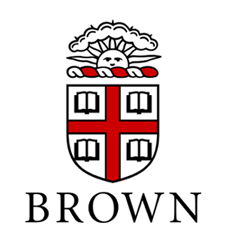Inventory
COLLECTION CLOSEDThis collection is unavailable for viewing, research, display, imaging, teaching and circulation. It is pending review by the appropriate Indigenous community or communities to determine if it contains culturally sensitive information. For additional information please contact hay@brown.edu.Series 1. Personal correspondence, 1859-1884
Box 1
This series contains letters primarily from John Young and his daughters Annie and Harriet Young and Lucie Ford to John's wife Susan in Brooklyn and to his daughter Martha. These letters cover a wide range of topics, including daily life at the Agency, the difficulty of finding and keeping competent staff, the problems involved in getting supplies delivered and distributed, the culture of the tribes living on the reservation and their relations with the Army, the school at the Agency, relations with the local Catholic missionaries, and the growing food shortages due to the destruction of the buffalo herds and budget cuts in Wahington, D.C. There is no correspondence for September 1881.
Series 2. Business Papers, 1873-1890
Box 1, 2XX
This series contains correspondence and papers related to John Young's tenure at the Blackfeet Agency. It primarily concerns two accounting disputes with the Office of Indian Affairs. The first dispute concerned whether $866.09 had been expended in the correct fiscal year. The second concerned the inventory of property turned over to the new agent when Young left the Agency and is referred to as the post-service accounting dispute. Some of the correspondence in this series is from Martha Young to various government officials on her father's behalf. Two letters are to John Young from R.H. Pratt, who was the superintendent of the U.S Indian Industrial School in Carlisle, Penn. Some of the letters appear to be either drafts or copies of letters sent. A second copy of the proposal for the reservation may be found in Series 4. Maps and drawings.
Series 3. Writings, 1885-1903
Box 1
This series contains writings by John Young and his daughter Harriet Young regarding their experience on the Blackfeet reservation. In his accounts of the Baker Massacre in these writings, Young identifies the Piegan band who were attacked as Cut Hand's band instead of Heavy Runner's band. In Harriet's "Essay on the Indian Character", she says that six hundred Indians on the reservation starved during the winter of 1884-85, not 1883-84.
Series 4. Maps and Drawings
Box 1, 2XX
This series contains maps of the reservation as well as of the western United States. The drawings are of the reservation compound and of the land surrounding it. Another copy of the "Proposed Reservation..." is in Series 2. Business papers.


